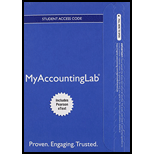
Concept Introduction
Cash Ratio: Cash Ratio is a financial liquidity ratio that measures the ability of an organization to meet its short-term obligations with only cash and cash equivalents. It is measured as a ratio of total cash and cash equivalents to current liabilities.
Debt Ratio: Debt ratio is a financial ratio that shows the percentage of total assets that is financed by the total liabilities of a company.
Debt Equity Ratio: Debt Equity Ratio is a financial leverage ratio that shows what proportion of debt an organization is using to finance its assets relative to shareholder’s equity. It is measured as a ratio of total debt to total
Earnings per Share: Earnings per Share (EPS) is a financial profitability ratio that measures the amount of net income available to common stockholders earned on one share. It is calculated by dividing net income available to common stockholders by the average (or weighted average) number of shares outstanding during a period.
Price Earnings Ratio: Price Earnings Ratio is a financial ratio for valuing a company’s stock in the market that shows what the investors are willing to pay for $1 of the company’s earnings. It is measured as a ratio of market price per share of a company’s stock to the earnings per share for a particular period.
Return on Common Stockholders’ Equity: Return on Common Stockholders’ Equity (ROCE) is a financial profitability ratio that measures the ability of a company to generate profits with the money invested by its shareholders. It is calculated by dividing net income available to common stockholders by average common stockholders’ equity for a particular period.
1.
To Compute: The ratios that are current ratio, cash ratio, debt ratio, debt to equity ratio, earnings per share, price/earnings ratio, and
Want to see the full answer?
Check out a sample textbook solution
Chapter 17 Solutions
MyLab Accounting with Pearson eText -- Access Card -- for Horngren's Accounting, The Financial Chapters (My Accounting Lab)
- What were total sales for the year on these financial accounting question?arrow_forwardGet correct answer this financial accounting questionarrow_forwardOriole Company incurs a cost of $34 per unit, of which $19 is variable, to make a product that normally sells for $59. A foreign wholesaler offers to buy 5,200 units at $31 each. Oriole will incur additional costs of $1 per unit to imprint a logo and to pay for shipping. Compute the increase or decrease in net income Oriole will realize by accepting the special order, assuming Oriole has sufficient excess operating capacity. (Enter negative amounts using either a negative sign preceding the number (e.g., -45) or parentheses (e.g., (45)).) Revenues $ Costs Net income $ Reject Accept Increase (Decrease) $ $ Should Oriole Company accept the special order? $ $ Oriole Company should ▾ the special order.arrow_forward
- Provide Answer For 3 Question need All Questions answer In follo Formatarrow_forwardI have assignment this 3 Question please Solve It for mearrow_forwardPharoah Street Inc. makes unfinished bookcases that it sells for $59. Production costs are $38 variable and $10 fixed. Because it has unused capacity, Pharoah Street is considering finishing the bookcases and selling them for $73. Variable finishing costs are expected to be $6 per unit with no increase in fixed costs. Prepare an analysis on a per unit basis showing whether Pharoah Street should sell unfinished or finished bookcases. (Enter negative amounts using either a negative sign preceding the number e.g. -45 or parentheses e.g. (45).) Sell Sales price per unit $ $ Cost per unit Variable Fixed Total Process Further Net Income Increase (Decrease) $ Net income per unit $ $ $ The bookcasesarrow_forward

 AccountingAccountingISBN:9781337272094Author:WARREN, Carl S., Reeve, James M., Duchac, Jonathan E.Publisher:Cengage Learning,
AccountingAccountingISBN:9781337272094Author:WARREN, Carl S., Reeve, James M., Duchac, Jonathan E.Publisher:Cengage Learning, Accounting Information SystemsAccountingISBN:9781337619202Author:Hall, James A.Publisher:Cengage Learning,
Accounting Information SystemsAccountingISBN:9781337619202Author:Hall, James A.Publisher:Cengage Learning, Horngren's Cost Accounting: A Managerial Emphasis...AccountingISBN:9780134475585Author:Srikant M. Datar, Madhav V. RajanPublisher:PEARSON
Horngren's Cost Accounting: A Managerial Emphasis...AccountingISBN:9780134475585Author:Srikant M. Datar, Madhav V. RajanPublisher:PEARSON Intermediate AccountingAccountingISBN:9781259722660Author:J. David Spiceland, Mark W. Nelson, Wayne M ThomasPublisher:McGraw-Hill Education
Intermediate AccountingAccountingISBN:9781259722660Author:J. David Spiceland, Mark W. Nelson, Wayne M ThomasPublisher:McGraw-Hill Education Financial and Managerial AccountingAccountingISBN:9781259726705Author:John J Wild, Ken W. Shaw, Barbara Chiappetta Fundamental Accounting PrinciplesPublisher:McGraw-Hill Education
Financial and Managerial AccountingAccountingISBN:9781259726705Author:John J Wild, Ken W. Shaw, Barbara Chiappetta Fundamental Accounting PrinciplesPublisher:McGraw-Hill Education





